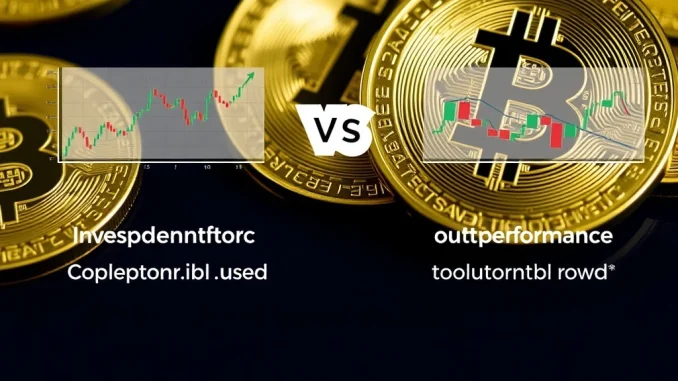
Are you invested in Bitcoin? If so, you’ve likely heard of Dollar-Cost Averaging (DCA), a popular method for buying assets over time. But what if another approach has delivered significantly better results recently? A new analysis from institutional liquidity provider Orbit Markets suggests the **Bitcoin Accumulator Strategy** has proven superior to DCA for Bitcoin since 2023.
Orbit Markets Analysis Reveals Key Findings
Institutional liquidity provider **Orbit Markets** recently conducted an analysis comparing the performance of two distinct Bitcoin investment strategies: the traditional Dollar-Cost Averaging (DCA) and the Accumulator strategy. Their findings, reported by CoinDesk, indicate a notable difference in outcomes since the start of 2023.
Understanding the Bitcoin Accumulator Strategy
The **Bitcoin Accumulator Strategy** takes a more active approach than simple DCA. Instead of buying a fixed amount at regular intervals regardless of price, the Accumulator strategy involves:
- Buying Bitcoin when it trades at a discount.
- Increasing purchase amounts if prices continue to fall.
This method aims to capitalize on price dips, accumulating more Bitcoin during periods of weakness.
DCA vs Accumulator: A Performance Showdown
The **DCA vs Accumulator** comparison conducted by Orbit Markets highlighted a clear difference in performance for Bitcoin investors since 2023. While DCA involves buying a set amount (e.g., $100) every week or month consistently, the Accumulator strategy adapts based on price action.
According to the analysis:
- Over a three-month period, the Accumulator strategy delivered returns approximately 10% higher than DCA.
- Over a 12-month period (since 2023), the Accumulator strategy showed an even greater lead, yielding up to 26% more return compared to DCA.
Orbit Markets concluded that DCA performed less effectively during this period, particularly struggling to keep pace during Bitcoin’s significant price movements.
Why the Accumulator Strategy Showed Strong Bitcoin Performance
The strong **Bitcoin Performance** of the Accumulator strategy since 2023 can likely be attributed to the market conditions. The period saw significant price volatility and notable dips followed by strong rallies. The Accumulator strategy is designed to take advantage of these dips, allowing investors to acquire Bitcoin at lower prices. By increasing purchases during price declines, the strategy effectively lowers the average cost of acquisition compared to DCA, which buys consistently regardless of whether the price is high or low.
Implications for Your Crypto Trading Strategy
What does this analysis from Orbit Markets mean for your **Crypto Trading Strategy**? It suggests that while DCA remains a sound, disciplined approach, especially for beginners or those who prefer a hands-off method, strategies that incorporate buying dips, like the Accumulator, may offer the potential for enhanced returns during certain market cycles. This analysis highlights the importance of understanding different strategies and how they might perform under varying market conditions.
It’s crucial to remember that past performance does not guarantee future results, and the Accumulator strategy requires more active management and potentially more capital available to deploy during dips. However, for those willing to explore beyond simple DCA, this data provides compelling food for thought.
Conclusion
The analysis from Orbit Markets provides valuable insight into recent **Bitcoin Performance**, demonstrating that the Accumulator strategy significantly outperformed the more traditional DCA method since 2023. By strategically buying dips and increasing purchases during price declines, the Accumulator delivered substantially higher returns. While DCA offers simplicity, the data suggests that a more dynamic approach may have been more effective for Bitcoin investors in the recent past. This finding encourages investors to evaluate different **Crypto Trading Strategy** options and consider how they align with their risk tolerance and market outlook.



